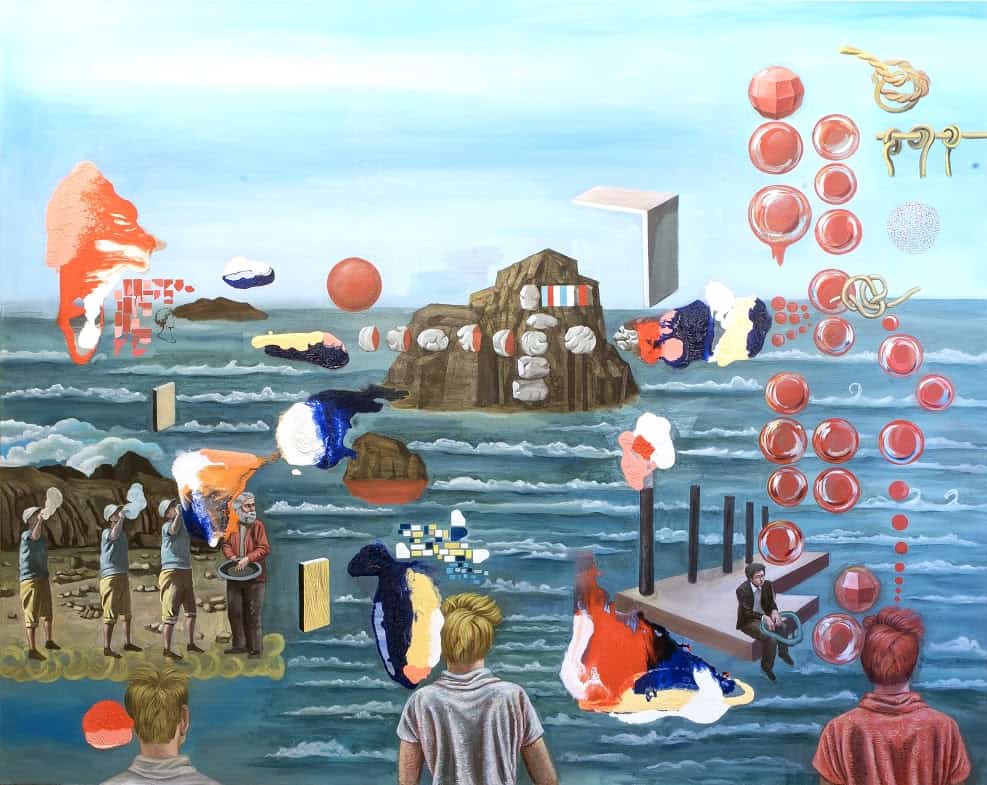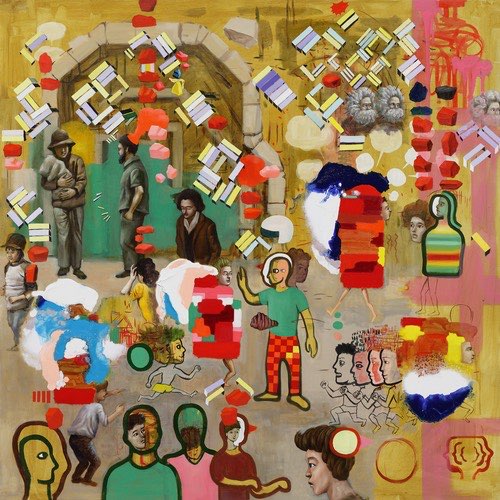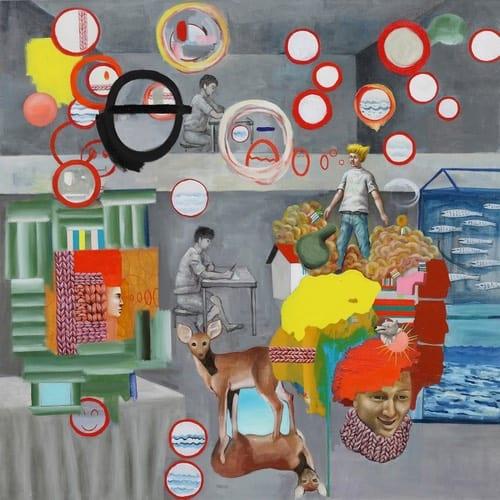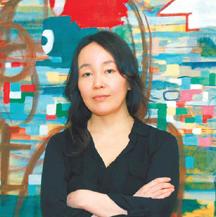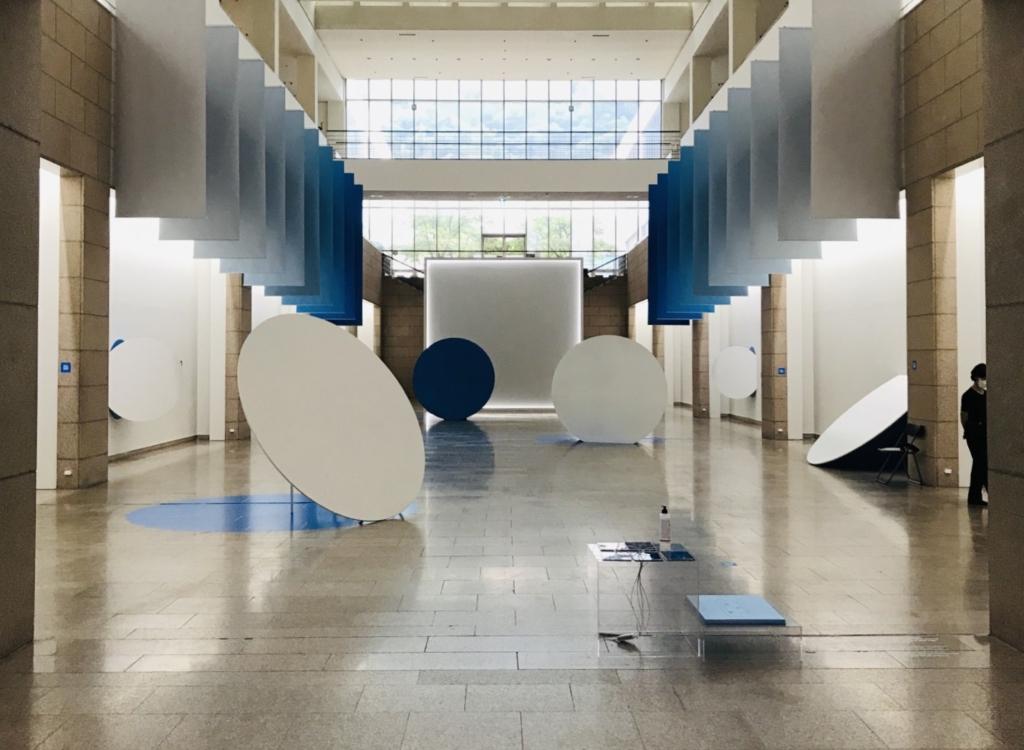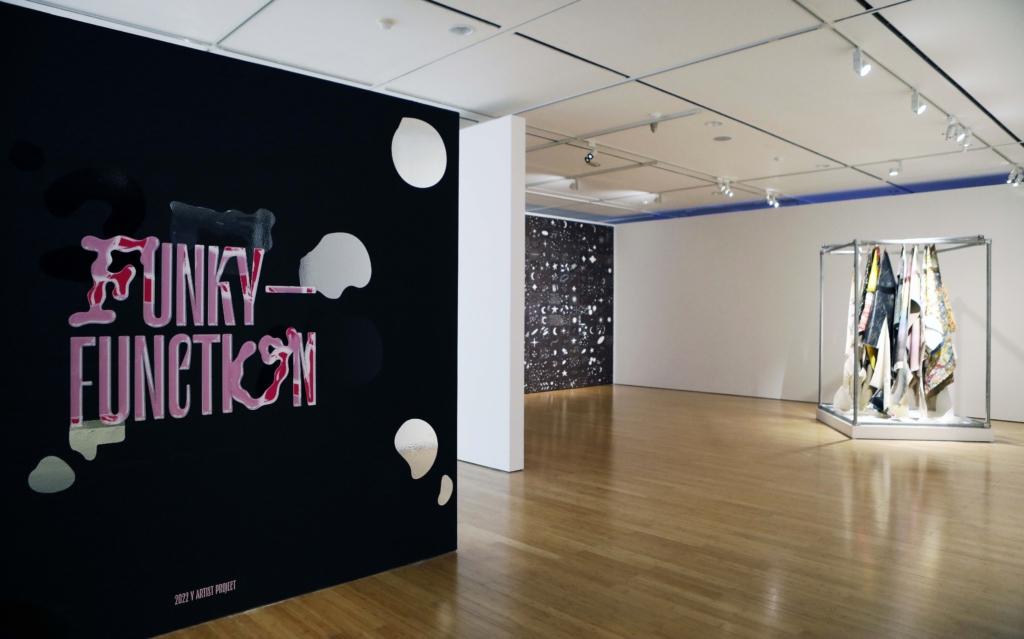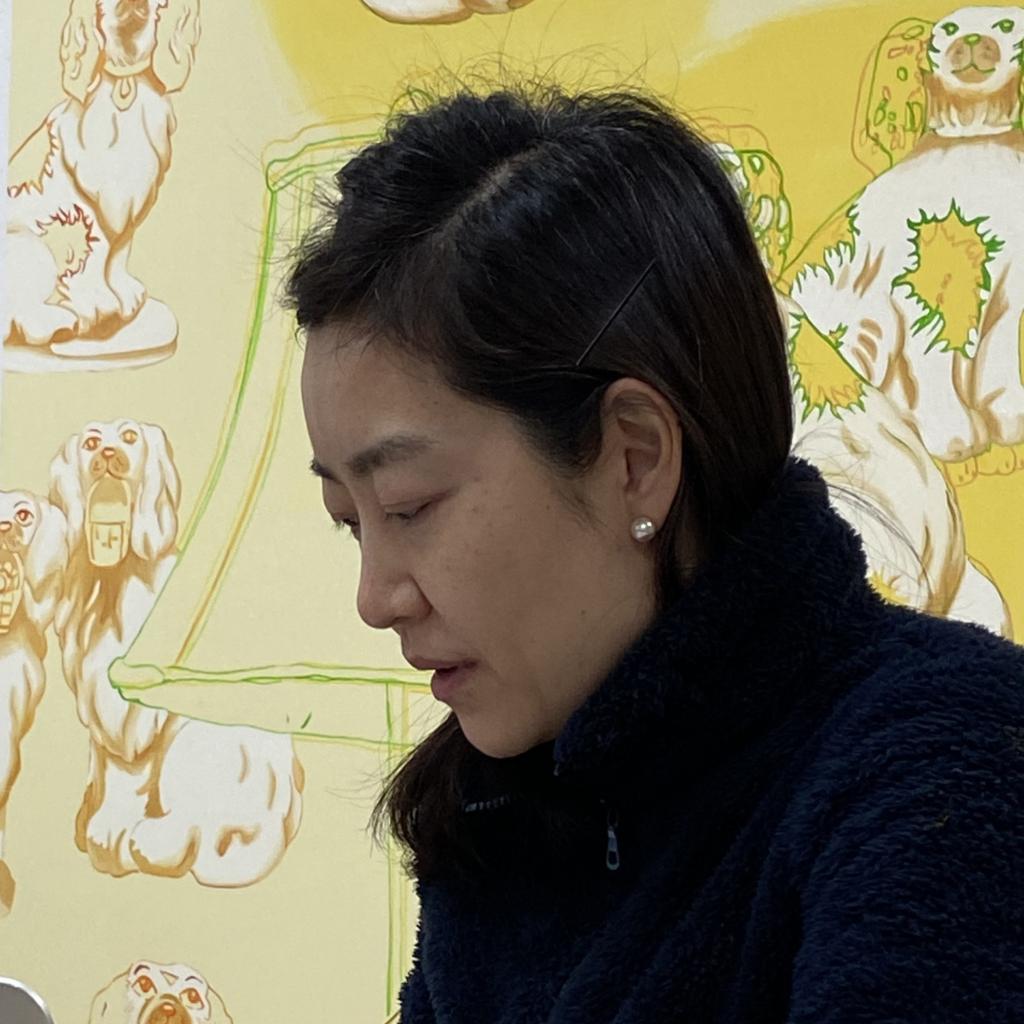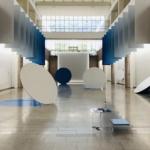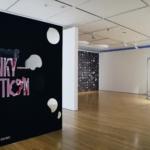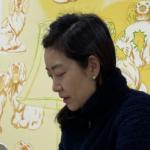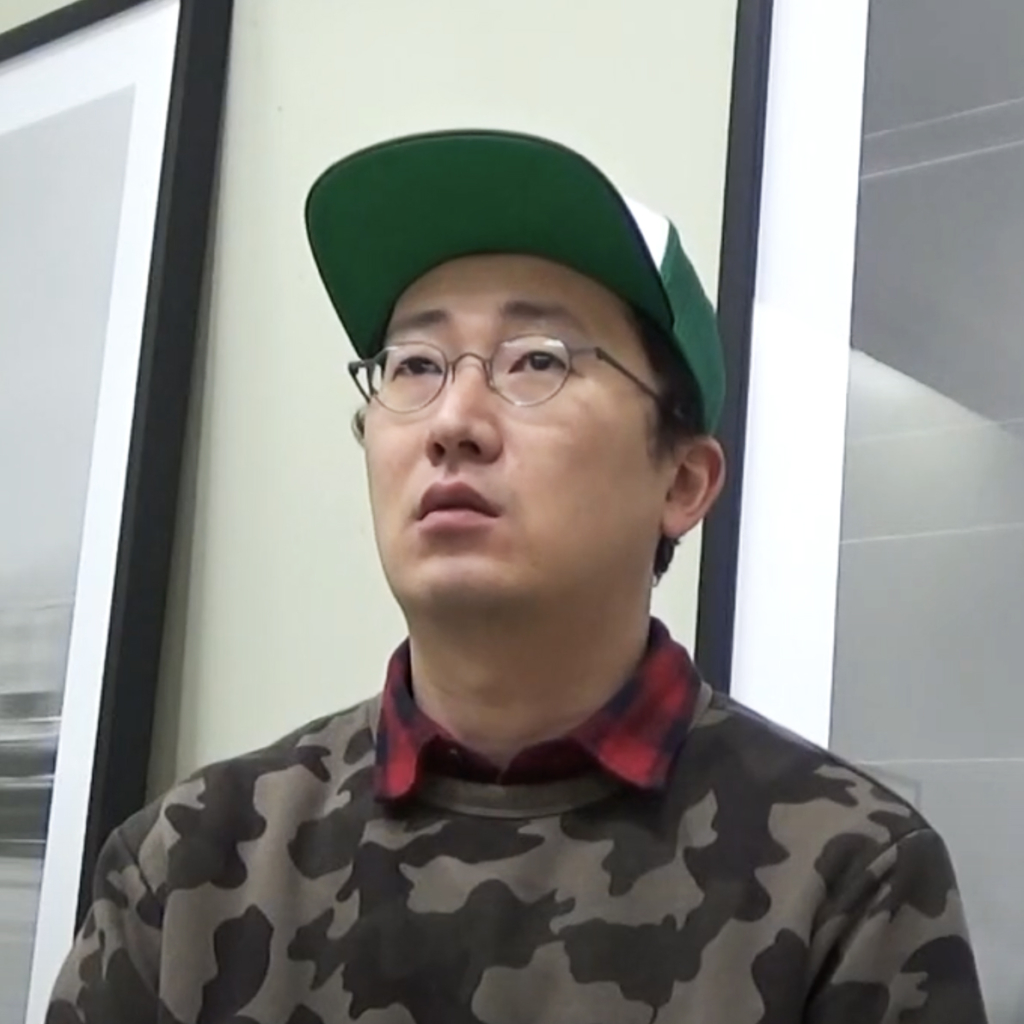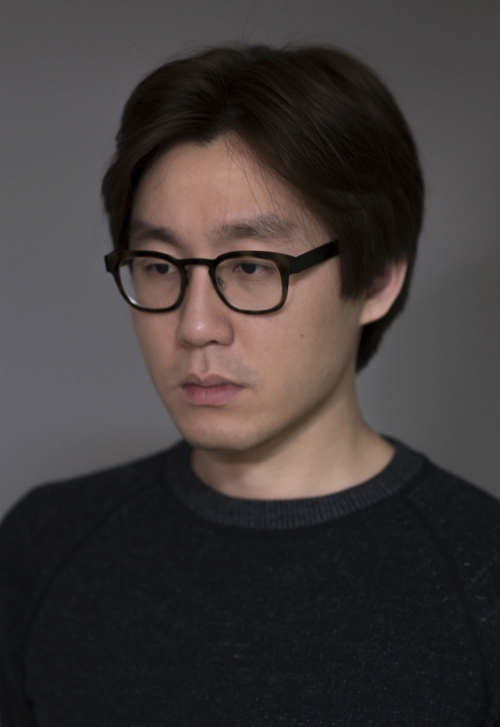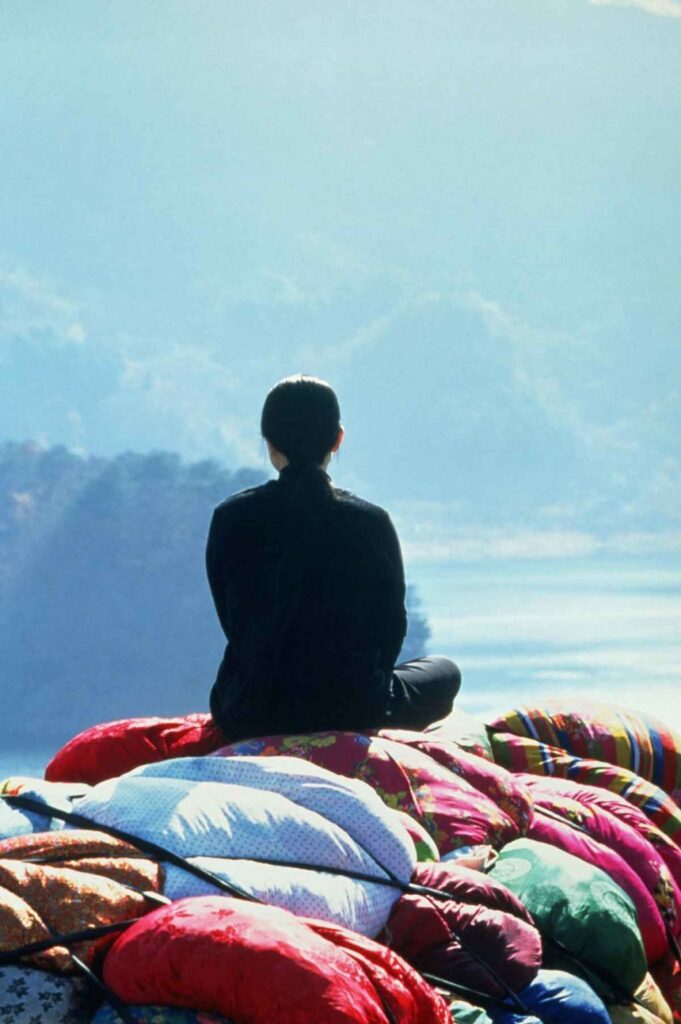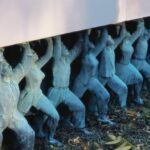A Multidimensional World in the Flat Paintings of Artist Chung Suejin
In South Korea, there is a meme in which some Swiss people realize that the word Switzerland (스위스) in Korean looks like a soldier holding a spear and standing between mountains.
To truly appreciate the works of Chung Suejin (b. 1969), we may have to see her paintings just like the Swiss who have never learned Hangeul, the Korean alphabet, do because they are able to view the characters merely as visual objects.
Chung’s paintings depict a flat space where gravity and perspective have disappeared. The repeated human figures lack a distinction from each other, and one is unlikely to find any relationship between them. The paintings are also filled with everyday objects and familiar backgrounds, but the images are scattered and even dismantled in all directions of the canvas, as with a surrealist painting where objects are placed in the wrong location.
These images in Chung’s paintings may seem to contain hidden symbols asking viewers to decode their meaning. Yet the artist’s intention is not representation. The images Chung depicts are close to non-objective or abstract forms where an artist combines different shapes and colors. If there is anything the artist intends to express in the plane of the canvas, it is a multidimensional world that reflects the conscious aspect of humans.
Chung explores the essence of painting—the structure of consciousness—through the combination of color and form. Therefore, various images appearing in her artwork are based on the principles and structures she has established.
The world, in Chung’s view, is divided into objective and formative reality. These two worlds are different. While the world exists independently from individual subjectivity, a multitude of realities can exist simultaneously because individuals experience the world in a subjective way.
In that world, some shapes resemble those in the real world; but other shapes seem to have nothing to do with reality. Therefore, the way to understand these shapes is inevitably different for everyone because we project our own experiences into paintings.
Chung argues that the consciousness structure in the artworks can be unveiled only when we recognize the fact that reality and the subjective figurative world are different.
As a guide to appreciating her artworks purely for aesthetics without any acquired knowledge, she published a book entitled Budo Theory, which explains how to read the logic of patterns inherent in human unconsciousness with 64 formal and 64 conceptual codes to make visible the multiple dimensions of human consciousness.
Although Chung’s paintings depict the conscious structure embedded in our thoughts, emotions, and feelings, she asks viewers to “appreciate, not read” the paintings, as they are intended to merely reveal the formative elements of paintings, such as shape and color.
Chung Suejin had her first solo exhibition in 1999 and has since held numerous solo shows. She was one of the first Korean artists who had a solo exhibition at the Arario Gallery’s Seoul branch in 2006. Her latest solo exhibition was at LEE EUGEAN Gallery, Seoul, in 2021. Her works are in collections of various museums and foundations, such as the National Museum of Modern and Contemporary Art (Gwacheon, Korea), Korea Arts Council (Seoul, Korea), Doosan Yonkang Foundation (Seoul, Korea), Seonhwa Art and Culture Foundation (Seoul, Korea), and Long Museum (Shanghai, China).
Aproject Company. Co., Ltd | Founder & CEO : Jay Jongho Kim
216 Dosan-Daero, B2F, Gangnam-gu, 06047 Seoul, Korea
Business Number : 894-88-01945
Contact : aproject.company@gmail.com
Mail-order-sales registration number : 제 2021-서울강남-04243 호










